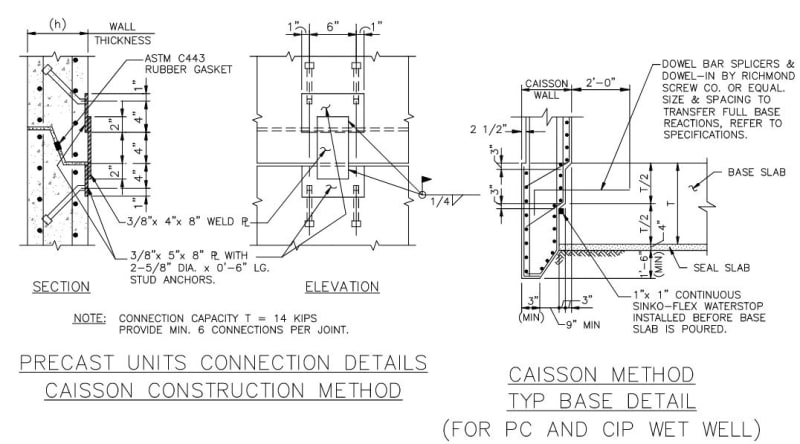oengineer
Structural
- Apr 25, 2011
- 731
I am seeking information (i.e., a detail) on the use of Caisson Straps to be used to install/construction precast riser sections for a wet well. Would anyone be able to point me in the right direction?
Suggestions/comments are appreciated.
Suggestions/comments are appreciated.



